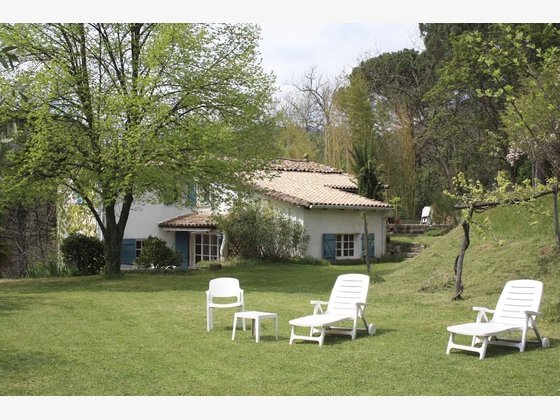Restored farmhouse at the gates of the Cevennes – St-Jean-du-Gard
Overview
- Updated On:
- April 28, 2023
- 4 Chambres
- 2 Salles de bain
- Garages
- 170 m2 Taille
- Year Built:
Between individuals Saint-Jean-du-Gard, France,saint jean du gard, france
Private individual sells house Saint-Jean-du-Gard, without agency commission
[tabgroup][tab title=”Advertisement”]
Location:
In the South of France, at the doors of the Cevennes, 45 mn from Nimes, 1h from Montpellier (airport and TGV station in both cities) and 1h from the beaches.
Close to all amenities of the village which is 5 minutes walk.
Description:
House of 170 m2 , 8 rooms .
- 1 large living room with a solid chestnut parquet floor, 1 living room with kitchen, 3 large bedrooms, a large office or bedroom, 2 bathrooms renovated in 2013, 2 toilets.
- An independent studio with WC.
- an independent shed that can be transformed into a pool house
4500 m2 of land overlooking the village with view on the valley.
Environment:
Calm in nature.
Tourist region with hiking trails in the Cevennes National Park.
In summer, swimming is possible in the river Gardon.
Chestnuts and mushrooms are the specialty of autumn.
[/tab]
[tab title=”Interactive brochure”] [button size=”small” type=”primary or info or success or warning or banger or inverse” title=”Example of an interactive brochure to come” link_url=”http://www.calameo.com/read/0037129552fc11cc687b3″]
[calameo code=”0037129552fc11cc687b3″ view=”slide” clickto=”embed” width=”700″ height=”500″ hidelinks=”1″][/tab]
[tab title=”Interactive photos”]
[/tab]
[tab title=”Situation”]
Saint Jean Du Gard 4164 hectares, 2815 inhabitants
On May 8, 1791, St Jean de Gardonnenque became St Jean du Gard. Although there are various vestiges in the commune attesting to human settlement since the Neolithic period, the first known written mention of St Jean de Gardonnenque is a papal bull of 1119 relating to a priory founded by the Benedictines of St-Gilles.
The village has developed over the centuries along the main communication route, the present-day Corniche des Cévennes, which in the Middle Ages was called “Grand chemin d’Anduze au Gévaudan”. Tanners, potters, and especially wool craftsmen, gave early to St-Jean its commercial vocation.
In the middle of the 15th century, almost the entire population of Saint Jean converted to the “Reformation”. From then on, and especially after the Revocation of the Edict of Nantes in 1685, it experienced the torments of persecution, clandestinity, resistance, sedition… which characterize the history of the Cévennes Protestants, the most famous episode of which is undoubtedly the Camisards’ war.
Olive trees, vines and chestnut trees have long been the pillars of local agriculture. The strong development of mulberry cultivation, silkworm breeding and silk activities brought work and wealth from the middle of the 16th century, so much so that in 1856 the commune had 23 silk workshops employing 1090 women and 150 men. The last of these mills closed in 1965.
[button size=”small” type=”primary or info or success or warning or banger or inverse” title=”Read more” link_url=”http://www.anduze-tourisme.com/fr/il4-page_p817-saint-jean-du-gard.aspx”]
[/tab]
More details on the Immovitrine International website



